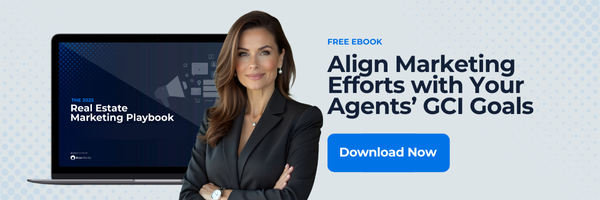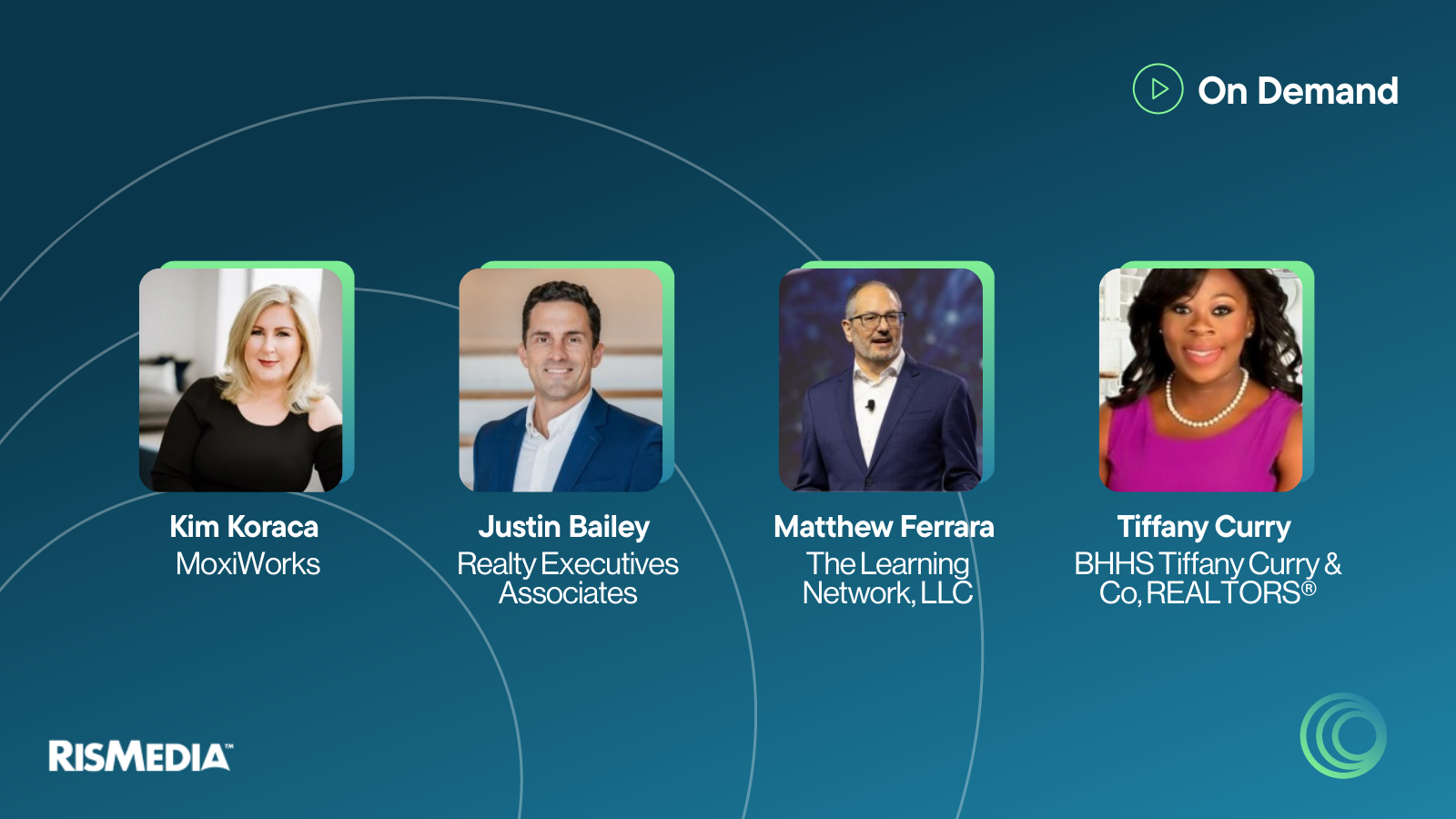Marketing is more than just a tool for selling properties—it’s the foundation of your brokerage’s success. By effectively reaching buyers and sellers, marketing ensures agents have the pipeline needed to hit their goals, which grows your business. But there are a few real estate marketing pitfalls to watch out for.
The Purpose of Marketing:
Marketing is the process of creating, communicating, and delivering value to customers. In real estate, this means crafting compelling listings, building trust with your target audience, and positioning your brokerage as the go-to resource for buying or selling homes. It powers a brokerage’s mission to support agents in growing GCI and create meaningful client relationships.
Why Agents Need to Be Omnipresent:
Today’s buyers and sellers live in a digital-first world. They expect to find agents, listings, and advice online at every stage of their journey. Being omnipresent—visible across search engines, social media, email, and more—ensures your agents are the ones they turn to when they’re ready to make a move.
The Broker’s Role
Brokers set the tone for marketing success by providing the right tools, training, and resources. By positioning your brokerage as a trusted brand, you create a pull effect, attracting clients and agents who align with your mission and values.
The 5 Most Common Real Estate Marketing Pitfalls
Even with the best tools and strategies, many brokers and agents struggle to see the results they expect from their marketing efforts. Why? Common mistakes in execution often derail their success. These pitfalls are often subtle, but they can have a profound impact on a brokerage’s bottom line.
1. Failing to Follow Up Consistently:
One of the most frequent (and costly) mistakes in real estate marketing is neglecting follow-ups. Agents often invest time and effort into generating leads, but fail to maintain consistent communication, allowing potential clients to slip away.
Why It Happens:
- Agents underestimate the number of touchpoints required to convert a lead.
- Lack of a structured system for managing follow-ups.
- Overwhelm caused by juggling multiple clients, leads, and tasks.
The Impact:
- Missed opportunities to build trust with leads.
- Leads who might have converted instead choose a competitor.
How to Fix It:
- Use a CRM like MoxiEngage to set automated reminders for follow-ups.
- Implement a structured process for contacting leads at specific intervals (e.g., immediately after an inquiry, 3 days later, 1 week later, etc.).
- Leverage tools like ActivePipe to automate email nurturing campaigns, ensuring consistent communication without requiring manual effort.
Example: An agent meets a potential client at an open house. Instead of waiting for the client to reach out, they send a personalized email the next day with local market insights, then follow up with a text message a week later. By staying top-of-mind, they increase the likelihood of converting the lead.
2. Lack of Personalization in Marketing:
In an industry built on relationships, generic marketing messages don’t resonate. Buyers and sellers want to feel seen and understood, and failing to deliver personalized communication can make your outreach feel irrelevant.
Why It Happens:
- Agents rely on one-size-fits-all templates or mass emails.
- Limited time or tools to tailor messages to individual prospects.
The Impact:
- Prospects disengage or ignore messages that don’t feel relevant.
- Missed opportunities to build rapport and trust.
How to Fix It:
- Use data to segment your audience into specific groups (e.g., first-time buyers, downsizing retirees, investors).
- Customize emails, social media posts, and even property presentations to address each group’s unique needs and interests.
- Tools like MoxiPresent and ActivePipe enable agents to craft dynamic presentations and campaigns tailored to each client’s preferences.
Example: Instead of sending the same email to all prospects, an agent creates a targeted campaign for first-time homebuyers, offering advice on securing financing and understanding closing costs. This level of personalization builds trust and establishes the agent as an expert.
3. Overlooking Retention as a Strategy:
Many agents focus solely on acquiring new clients, neglecting the immense value of retaining past clients. Happy clients not only return for future transactions but also provide referrals, which are often the most reliable source of new business.
Why It Happens:
- Pressure to meet immediate GCI goals leads to prioritizing new leads over existing relationships. \
- Lack of systems to stay in touch with past clients after the transaction closes.
The Impact:
- Agents lose out on repeat and referral business.
- Clients feel forgotten, damaging the long-term relationship.
How to Fix It:
- Implement retention strategies like sending regular market updates to past clients, providing them with ongoing value.
- Create a post-sale communication plan that includes check-ins (e.g. holiday greetings or congratulations on the anniversary of their home purchase via MoxiEngage and ActivePipe).
- Host client appreciation events to maintain personal connections and show gratitude.
Example: A broker encourages agents to send annual market value updates to past clients, reminding them of their home’s appreciation. This simple gesture keeps the agent top-of-mind and positions them as a valuable resource for future needs.
4. Underutilizing Digital Tools
Digital tools have revolutionized real estate marketing, but many agents fail to take full advantage of them. They either don’t use the tools available to them, or they don’t know how to maximize their potential.
Why It Happens:
- Lack of training on how to use digital platforms effectively.
- Overwhelm caused by the abundance of tools and platforms available.
The Impact:
- Agents waste time on ineffective strategies, missing out on opportunities to scale their efforts.
- Leads fall through the cracks due to poor organization.
How to Fix It:
- Brokers should provide hands-on training for tools to ensure agents are confident in their use.
- Encourage agents to start small by mastering one tool or platform before adding others to their workflow.
- Regularly review analytics to identify what’s working and optimize campaigns accordingly.
Example: An agent uses MoxiImpress to automate the creation of marketing materials for a new listing. Instead of spending hours designing flyers and social media posts, the agent focuses on client outreach while the tool handles the creative tasks.
5. Failing to Adapt to Changing Consumer Behavior
Consumer expectations in real estate are constantly evolving. Today’s buyers and sellers expect instant information, digital convenience, and transparency. Agents who fail to adapt risk falling behind.
Why It Happens:
- Resistance to change or reliance on outdated methods.
- Misunderstanding of what modern clients value most.
The Impact:
- Agents lose clients to competitors who offer a more modern, tech-savvy experience.
- Reduced relevance in an increasingly digital marketplace.
How to Fix It:
- Stay informed about trends in consumer behavior (e.g., preferences for virtual tours, mobile-friendly websites).
- Incorporate omnichannel marketing strategies that ensure your presence across many touchpoints.
- Emphasize your unique value proposition, such as local expertise and personalized service, while meeting digital expectations.
Example: A brokerage invests in virtual tour technology to appeal to remote buyers. By blending cutting-edge tools with their agents’ local market knowledge, they create a compelling client experience that sets them apart.
Want to dive deeper into perfecting your real estate marketing game?
We’ve just released our FREE 2025 Real Estate Marketing Playbook.
The 2025 Real Estate Marketing Playbook is a comprehensive guide designed to help broker-owners and mid-sized brokerages master modern real estate marketing strategies, align marketing efforts with Gross Commission Income (GCI) goals, and ensure their agents succeed in today’s competitive digital landscape.




